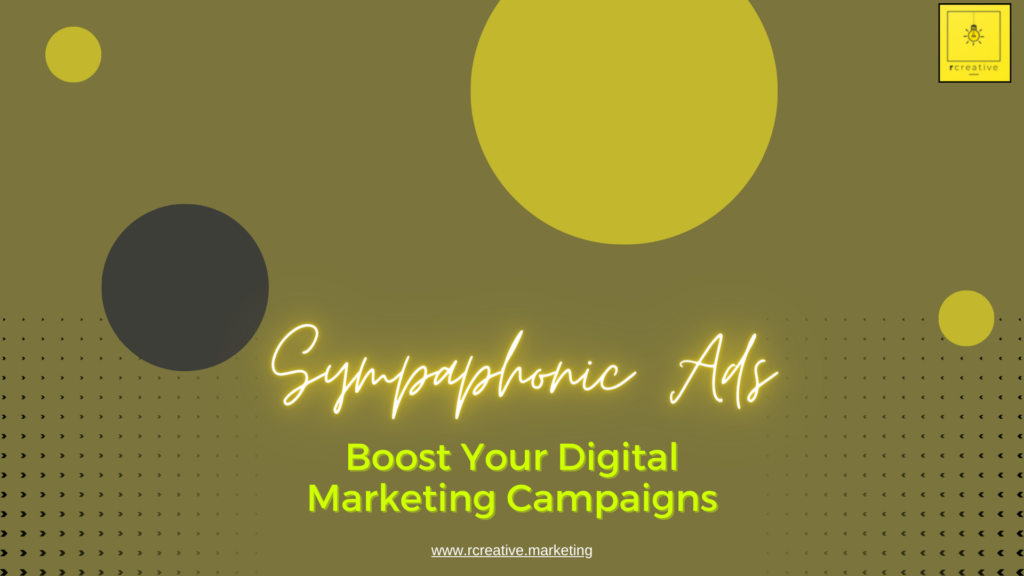How to Grow Your Ecommerce Store with Killer Content
If you're running an ecommerce business, then you'll know how important it is to stay connected to your customers. Any ecommerce company requires sales to thrive, but one-off sales from the occasional client isn't enough. You need to find a way of transforming the traffic that happens upon your business website into dedicated clients for your company. That's where killer content comes in. Ultimately, in today's highly saturated online market, it's not enough to simply have a great product or service that you can deliver to your customers. You also need to build a relationship with your customers - that's where content marketing is so essential. Content gives you a way to connect with your customers on a deeper level and show them the value of both your brand and the things that you sell. The right content can make your audience "fully connected" to your brand. Statistically, fully-connected customers are 50% more valuable than their counterparts. So, how do you deliver killer content? [text_with_frame id="368c1dbfefba91dceb946d322e0e86bc" content="‹¨›p‹˜›‹¨›em‹˜›If you find this article helpful consider giving it a share‹¯›nbsp;‹¨›/em‹˜›?‹¨›/p‹˜›" line_color="rgba(0,0,0,.07)" text_font="body" heading_font="heading" animation="none" animation_speed="2" animation_delay="0" __fw_editor_shortcodes_id="e6852c2dacc162bc8c34ba646905e841" _fw_coder="aggressive"][/text_with_frame] 1. Get to Know Your Audience The first step in delivering fantastic content for your audience is figuring out who you're talking to. The more you know about your audience, the easier it will be to create the content that's most likely to capture and keep their attention. You can find out details about your audience by looking at the previous sales conducted by your organization. Other options include sending out surveys and questionnaires or simply performing a competitive analysis to discover what kind of customers other brands in your niche are trying to attract.…
Quick and Dirty SEO Primer for Bloggers
If you’re a blogger, you probably already know that SEO (search engine optimization) is an essential part of getting your blog posts “out there” and in front of your readers. But in my experience, bloggers don’t get the full picture when it comes to putting together the pieces for optimal search engine performance. Some bloggers rely too heavily on page views or ad clicks. Others employ keywords to a detrimental degree. Many don’t even bother to research keywords before starting a blog post. When it comes to getting your blog noticed, you need to make SEO work for you. And to do that, you need to coordinate your editorial efforts to unite around a singular goal: reaching your audience and converting them to loyal customers. I promised this would be quick and dirty, so let’s go. [text_with_frame id="368c1dbfefba91dceb946d322e0e86bc" content="‹¨›p‹˜›‹¨›em‹˜›If you find this article helpful consider giving it a share‹¯›nbsp;‹¨›/em‹˜›?‹¨›/p‹˜›" line_color="rgba(0,0,0,.07)" text_font="body" heading_font="heading" animation="none" animation_speed="2" animation_delay="0" __fw_editor_shortcodes_id="e6852c2dacc162bc8c34ba646905e841" _fw_coder="aggressive"][/text_with_frame] The Quick: SEO is based on complex algorithmic logic. You can’t “trick” your way into a favorable SEO ranking by using those easy, ridiculous tips you find on blogging sites that promise you can make six figures blogging in x number of days. This includes tactics like: Asking for page views from random people in Facebook groups Asking for ad clicks from the same people Keyword stuffing Filling out a form that promises distribution to some number of search engines Neglecting site design and mobile optimization Stop using these tactics. They won’t boost your SEO. But they will: Skyrocket your bounce rate Bloat ad click numbers and make you lose out on future campaigns with reputable companies Make you look like a horrible…
Stand Out From the Crowd and Stay One Step Ahead of Copycat Competitors
Copycats. Just when you thought you’d left these middle school nuisances behind, you see something come across your Instagram feed that looks shockingly familiar. A little too familiar… You overhear a newcomer to a networking event with an elevator pitch that you’ve heard before. That you’ve delivered before… Copycat competitors are lurking everywhere, regardless of what industry you work in. And with the proliferation of online content and widely shared ideas, it’s easier than ever for someone to pick up your trail and start mimicking your every move. If you haven’t experienced copycat competition yet, chances are, you will at some point down the road. Since getting off the Internet and conducting business by smoke signal isn’t exactly a viable option, how can you set yourself apart and stay one step ahead of your copycat competition? And are there any ways that copycats can actually help you stand out from the crowd? Read on to learn more about how you can stay ahead of your copycats and mute their impact. Step One: Own Your Niche Chances are, if you have a business of any sort, you also have a niche. Whether you cater to Colorado newlyweds seeking unique honeymoon itineraries or repair air conditioners in government buildings, you know your market and how to reach them. When you work your niche, you gain visibility in and develop strong relationships with others in that niche. Typically, you don’t have a lot of competition within that niche, and you stand out from the crowd simply because it’s such a specialized portion of the market. When copycats try to enter the scene, they may be watching your moves and try to gain an…
6 Elements of an Outstanding Small Business or Nonprofit Website – Quiz and Checklist
There are currently over one billion websites online - that's almost one website for every four Internet users - but few of them stand out from the crowd. Many have a sense that their websites blend into the background noise of the Internet more than they should but they don't know precisely why... or what to do about it. Yet how to stand out from the rest of the Web is not a secret (and if it was a secret we're about to break the story). The majority of those 1 billion + websites are poorly maintained, difficult to navigate, not up to modern Web standards, and don't offer their visitors much value. It isn't difficult to get your website to truly stand out. Follow this checklist and do whatever it takes to get a 100% and we guarantee that your website will get more visitors and more conversions than it has previously. [text_with_frame id="368c1dbfefba91dceb946d322e0e86bc" content="‹¨›p‹˜›‹¨›em‹˜›If you find this article helpful consider giving it a share‹¯›nbsp;‹¨›/em‹˜›?‹¨›/p‹˜›" line_color="rgba(0,0,0,.07)" text_font="body" heading_font="heading" animation="none" animation_speed="2" animation_delay="0" __fw_editor_shortcodes_id="e6852c2dacc162bc8c34ba646905e841" _fw_coder="aggressive"][/text_with_frame] #1. Well Maintained Is your website well maintained? Web standards change over time - and so must your website. Does that upset you or make you feel pressured by our ever-evolving computerized society? We feel for you. We really do! Our own company has to keep up with the changes and that means constantly reeducating ourselves. The good news is that you probably don't need to be constantly re-learning the Web's virtual landscape. Your web-developer or friendly drag-and-drop-site-builder-app should be doing that for you. You can tell that your site isn't well maintained without getting technical if your site has: Broken links Broken images Visible…
Welcome to Rystedt Creative Services
Increase Your Online Reach There are seemingly endless requirements for running a successful business or organization. Organization management, accounting, advertising, and customer relations alone can add up to an overwhelming tax on resources. Plus, you need to present a polished online image. Yet you still need to do what got you into your business to begin with! Since the Internet's initial public growth in the early 1990's businesses and nonprofits have been leveraging it to increasing success. Today it has become indispensable for running a successful organization. The Internet may be where your clients, customers, or donors first discover you, peruse your menu, order your products, chat with your representatives, or double check your hours of operation. Regardless, you need a strong online presence. So do the people who depend on and love what your organization does. Rystedt Creative exists to make this task easier. So you can spend more time doing what you love. Rystedt Creative offers three closely related services: 1) Copywriting Services Perhaps you have found that growing an organic online following takes a lot more time than you initially planned. From well-written long-form blog posts to witty and engaging social media content and SEO ready landing pages and product descriptions your clients want to hear from you - and often. Yet regularly updated online content can be a job in itself. That's where we can help. We write this content for you so you can use your time doing whatever got you into your niche in the first place. 2) WordPress Development Perhaps you are one of 50% of businesses who still do not have a dedicated website. Or you may have an aging site with…
What Your Facebook-Only Business is Missing
Most businesses these days have a Facebook presence. Some business owners have a Facebook presence and little – if anything – else. But are Facebook-only businesses missing out? Let’s take a look at some of the weaknesses of the Facebook-only business model. https://www.youtube.com/watch?v=rXfPzSQYyLg&feature=youtu.be Facebook’s Audience is Huge. Everyone’s on Facebook. Or at least almost anyone with an Internet connection is. Facebook is free and it’s an easy place to connect with others, which theoretically makes it the perfect place to launch and operate your business. However, Facebook is free for a reason. Zuckerburg and the Facebook HQ team know that everyone is on Facebook. They also know that you, the business owner, want to interact with all of the people on Facebook and sell them things. It is not advantageous for Facebook to have a free open marketplace for every John and Jill who wants to sell widgets from their corner of the world. Oh no, it is not. Facebook needs to act as the gatekeeper between you and all of the people that you want to reach. How do they do that? Ads. If you want people on Facebook to actually see and interact with your Facebook-only business, you need to pay for advertising on Facebook. This is pretty much the only way you can guarantee that your messages end up in (some) people’s newsfeeds (somewhere). Will the posts show up in your friends’ newsfeeds? No. Probably not. Will they show up in your target audiences’ newsfeeds? Maybe. Maybe not. The Facebook advertising algorithms are veiled behind a thick shroud of mystery. There’s even some speculation that the accounts that your ads are shown to don’t actually belong to…
Do Keywords Still Matter in Search Engine Optimization (SEO)?
What keywords are you ranking for?You want your website to rank for words and phrases that your ideal customers are using in their search queries.Some online marketers still advocate for a high percentage of the words on any page containing the key words or phrases you are attempting to rank for. Other online marketers are touting a new era of interconnected topical and contextual ranking methods that utilize keywords more deftly.This has led many businesses (and organizations) to question whether or not keywords still matter in their SEO strategies. Psst! Keywords still matter for SEO... but shouldn't be used quite like they were in the 2000s. https://www.youtube.com/embed/lNk7n_V3uqM What's a keyword anyway? A "keyword" or "key phrase" contains the idea or topic your content is about. If, for example, you run a cleaning business and you write a post about best window cleaning methods some of the natural keywords for that content may be "clean", "windows", "wash", "how to", and others. Hopefully, if your content is well written, many of these keywords would show up in close proximity to one another within the same sentence to make up a few "key phrases" or "long tail keywords". If your content is naturally using keywords that your target market is searching for you have a higher chance of driving organic search traffic over time. Effective keywords are, essentially, the topics and ideas on the minds (and screens) of both your business and your ideal customers. The obsession with keywords Search engines still primarily crawl text when determining what your webpage is about. (That's why lengthy well-written content still matters online). Consequently, at one time, the most important part of your SEO strategy was…
A Marketing Primer for Online Sales
In today’s online marketing vernacular, there seems to be little, if any, distinction between marketing and promotion. Many marketing “experts” even use the terms interchangeably to refer to the act of selling products online. In truth, marketing and promotion are two separate but interrelated activities. Both are essential for pushing products or services and attracting new customers. But there are some significant differences. [text_with_frame id="368c1dbfefba91dceb946d322e0e86bc" content="‹¨›p‹˜›‹¨›em‹˜›If you find this article helpful consider giving it a share‹¯›nbsp;‹¨›/em‹˜›?‹¨›/p‹˜›" line_color="rgba(0,0,0,.07)" text_font="body" heading_font="heading" animation="none" animation_speed="2" animation_delay="0" __fw_editor_shortcodes_id="e6852c2dacc162bc8c34ba646905e841" _fw_coder="aggressive"][/text_with_frame] Promotion is a Part of Marketing… But Not All Marketing is Promotion You may have learned in geometry class that all squares are rectangles, but that not all rectangles are squares. Similarly, promotion is part of marketing, but the whole of marketing is not promotion. Sure, the primary goal of a successful marketing strategy is to land sales. But it’s a mistake to assume that promoting the product is the ultimate goal of a marketing strategy. The Marketing Mix At its core, marketing is the flow of four activities that make up a package called the “marketing mix”. These activities are: Product Price Placement Promotion (My business school professors would be so proud that I remember this ? ) The four pillars of the marketing mix work in tandem to ensure that a marketing strategy is successful. I like to think of them as the four legs of a table – without one or two, the table would be entirely useless. When it comes to online sales strategies, there seems to be an overwhelming emphasis on the promotion pillar. After all, products live and die by whether or not a company can adequately promote them on its…
What’s The Real Cost of Creative Content?
When you think about working with a creative content professional to boost your brand or business, there are probably two things that immediately come to mind: First: “I’m going to get a personalized product that perfectly fits my business and brand!” And: “Holy crap! This is expensive!” If you were to order something like a customized ceramic pet food bowl from an artisan potter, you expect to pay more than you would for a similar product from, say, Walmart or PetSmart. You might pay three or four times more for a bowl that’s made without toxic chemicals or has a color scheme that you picked and your pet’s name etched into the side. The same rule applies when you are in the market for intangible creative products, like photos, design work or custom content. It’s hard to value creative intangibles when you’ve never shopped the market for them before. Often, people imagine that creative work should only cost them a little more than an out of the box product, like a subscription to a drag-and-drop web builder (Weebly, Wix, Squarespace), for example. And unfortunately, the internet – which connects businesses and individuals to any type of creative professional we could ever imagine – does a lot to devalue the hard work that creatives put into the products that they offer. This is a huge problem. [text_with_frame id="368c1dbfefba91dceb946d322e0e86bc" content="‹¨›p‹˜›‹¨›em‹˜›If you find this article helpful consider giving it a share‹¯›nbsp;‹¨›/em‹˜›?‹¨›/p‹˜›" line_color="rgba(0,0,0,.07)" text_font="body" heading_font="heading" animation="none" animation_speed="2" animation_delay="0" __fw_editor_shortcodes_id="e6852c2dacc162bc8c34ba646905e841" _fw_coder="aggressive"][/text_with_frame] What Happens When Businesses Devalue Creative Work? As a writer, I spend a small portion of my time browsing writing job postings to stay on top of emerging niches and content types that companies…
12 Ways to Use Value Added Content to Generate (and Nurture) Leads
Value added content is exclusive content that your audience cannot get anywhere else.Perhaps you have a blog and you've even been expanding into other forms of value added content. Yet you still are not generating the leads you want with that content.Value added content is the core of any robust inbound marketing strategy but you still need to leverage it. Merely publishing your content won't (usually) earn you customers.So here are 12 ways to use your value added content to generate leads: 1. Genuinely Help Your Readers Your content is not "value added" unless it is adding value to your readers. Your first goal with every piece of content you publish should be to help your readers - add value to their lives and businesses. Your potential customers can usually sense self-serving and useless content within seconds of loading your page. And when they sense this they "bounce" to another website. Keep your bounce rate low and generate more leads by genuinely helping your readers. 2. Build Trust in Your Brand Trust is an important part of any sales process. A purchase is an act of trust. Your customer is trusting that your service or product is going to solve a problem, improve his life, or help him reach his goals. A purchase is an act of faith in you, your business, and what you offer your customer. You need to build this trust early. Value added content is the perfect vehicle for building that trust. As you genuinely help your readers you build trust with them. Help them whether they buy from you or not and, paradoxically, they will be more likely to buy. 3. Invite Subscribers Email marketing…


